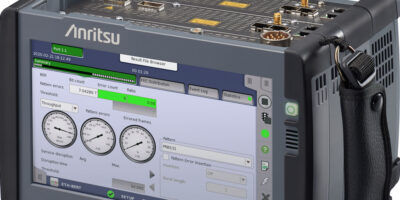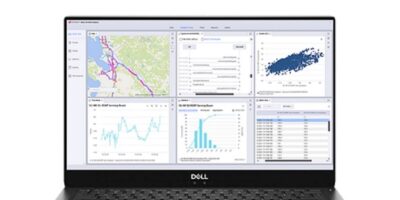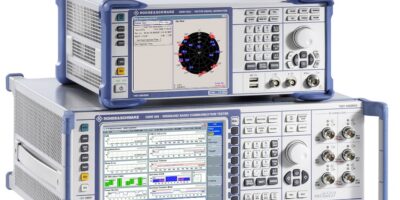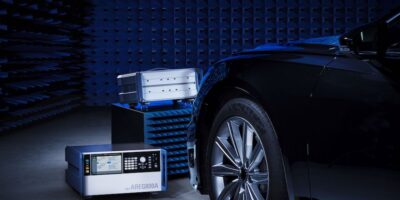Simultaneous dual-port 400GbE and 200GbE measurement is supported by the portable 400G network tester MT1040A-020. The 400G dual / 100G quad channel option offers upgraded functions to Anritsu’s Network Master Pro.
Installing the MT1040A-020 option in the MT1040A supports simultaneous dual-port 400G Ethernet (400GbE) measurements using a combination of two 400G measurement modules. Data transmission and receiving (Tx and Rx) tests can be performed simultaneously making it possible to test networks and also measure the latency and execute quality tests of 400G equipment using a single MT1040A unit. Additionally, testing of 200GbE used in data centres is also supported.
The upgrade to support 400GbE is in response to customers’ requirements to deploy and operate high-speed networks.
The introduction of 5G services, increased cloud computing, as well as a rapid increase in teleworking, has driven requirements for increased network speeds and larger data capacities, explained Anritsu. 400GbE can reinforce these networks but to configure stable, high speed, large capacity networks, equipment must be assured beforehand. At the same time, reducing network costs, while increasing complexity of network functions and test items demands evaluation of network equipment.
The 400GbE Network Master Pro MT1040A is a portable tester for evaluating the communications quality of various network types operating at speeds ranging from 10Mbits per second to 400Gbits per second. The stackable measurement modules can be configured to support simultaneous dual-port 400GbE measurements using a combination of two 400G measurement modules, for quality tests (for example bit error rate or BER, throughput, frame loss/latency) of 400GbE equipment. The MT1040A also supports 200GbE, offering network operators a cost-effective, all-in-one quality tester, added Anritsu.
The unit has a useful, automatic, one-button test function for pass / fail evaluation of multiple test results.
Anritsu has provided innovative communications test and measurement solutions for 125 years. Anritsu’s philosophy engages customers as true partners to help develop wireless, optical, microwave / RF, and digital solutions for R&D, manufacturing, installation, and maintenance applications, as well as multi-dimensional service assurance solutions for network monitoring and optimisation.
Anritsu also provides precision microwave / RF components, optical devices, and high-speed electrical devices for communication products and systems.
The company develops advanced solutions for 5G, M2M, IoT, as well as other emerging and legacy wireline and wireless communication markets.







